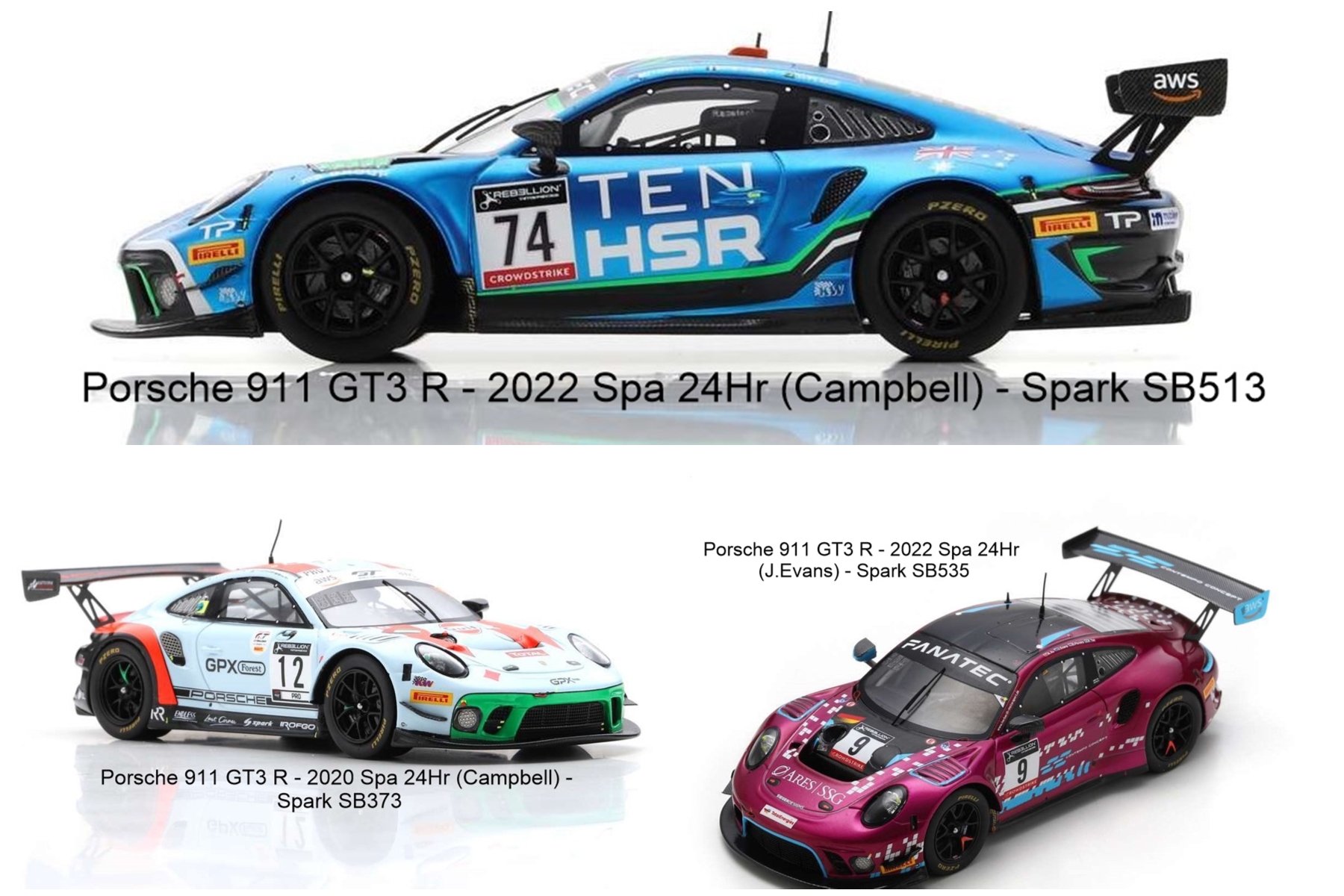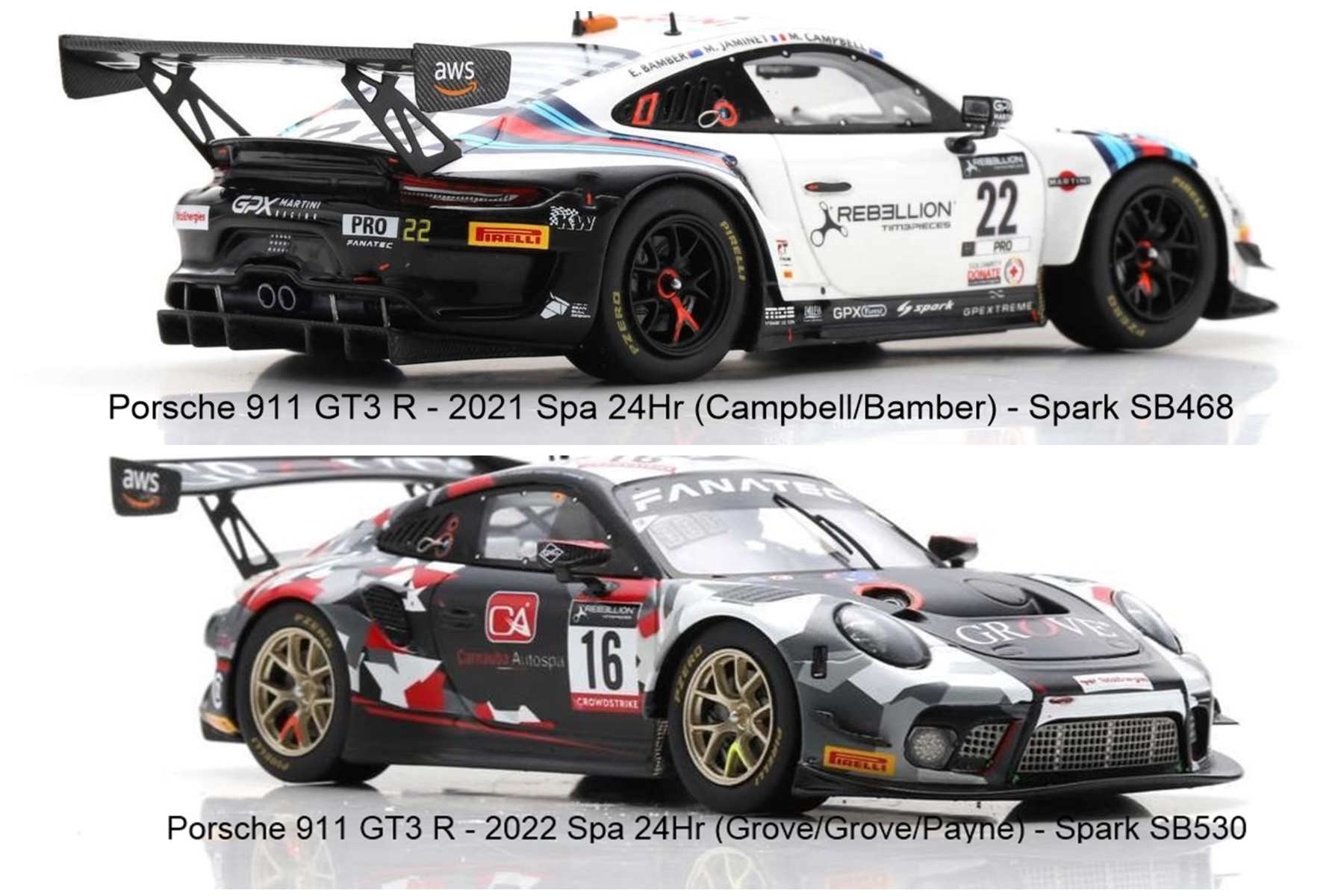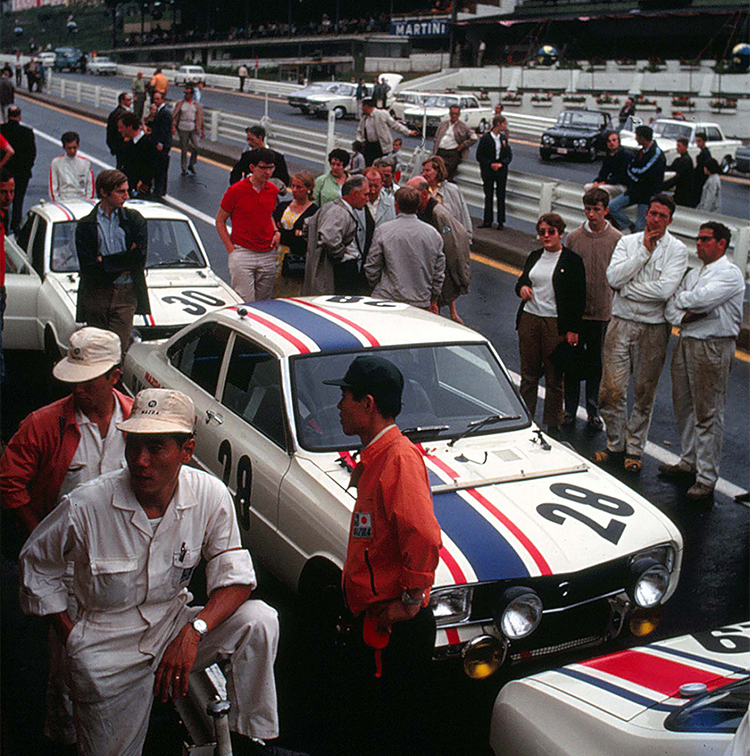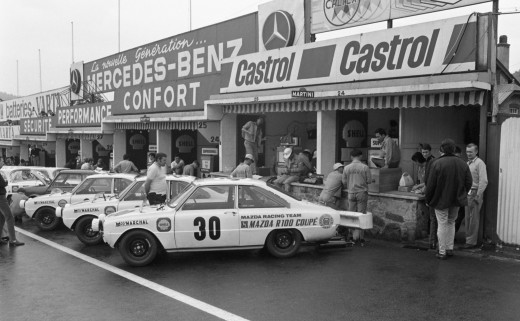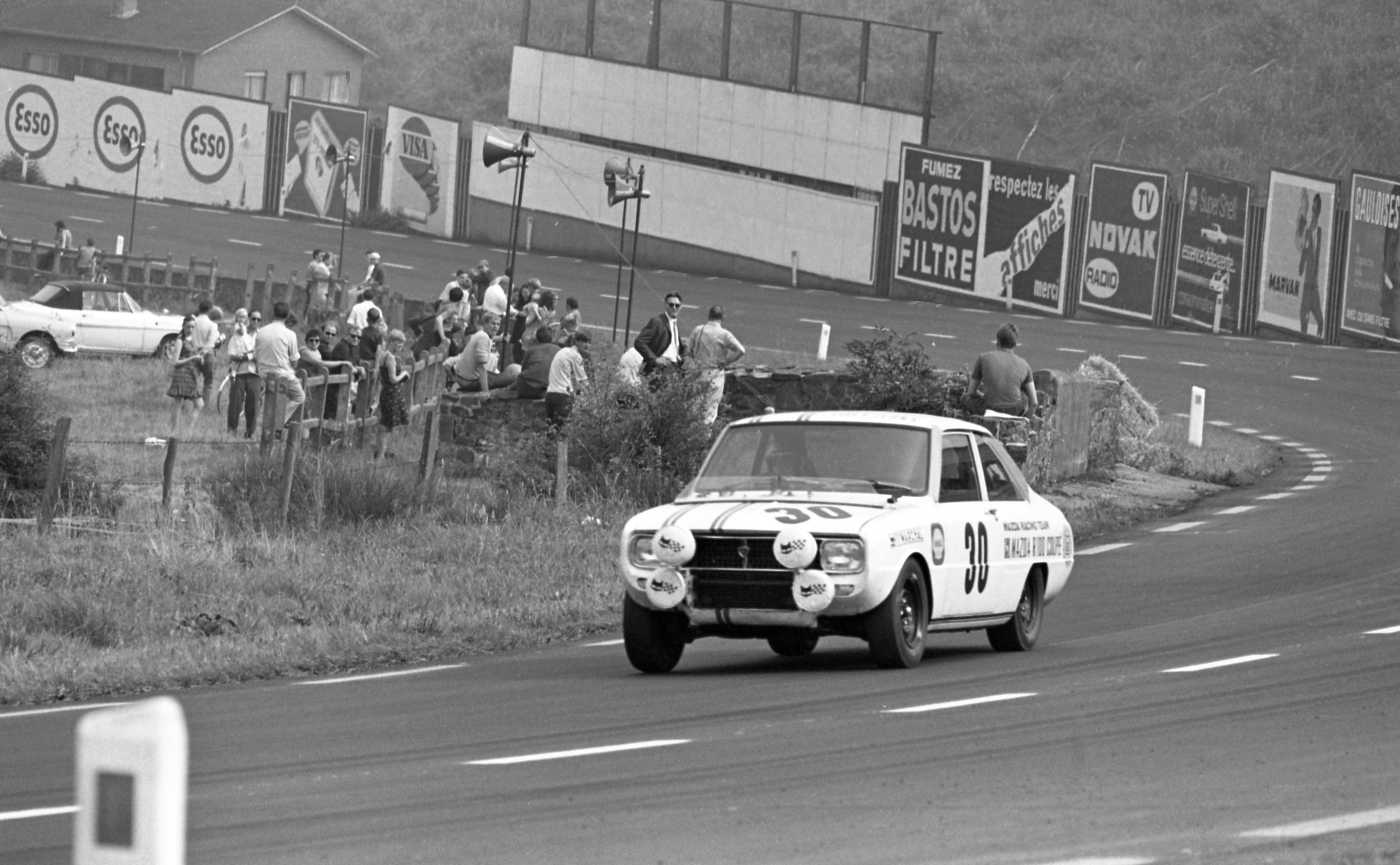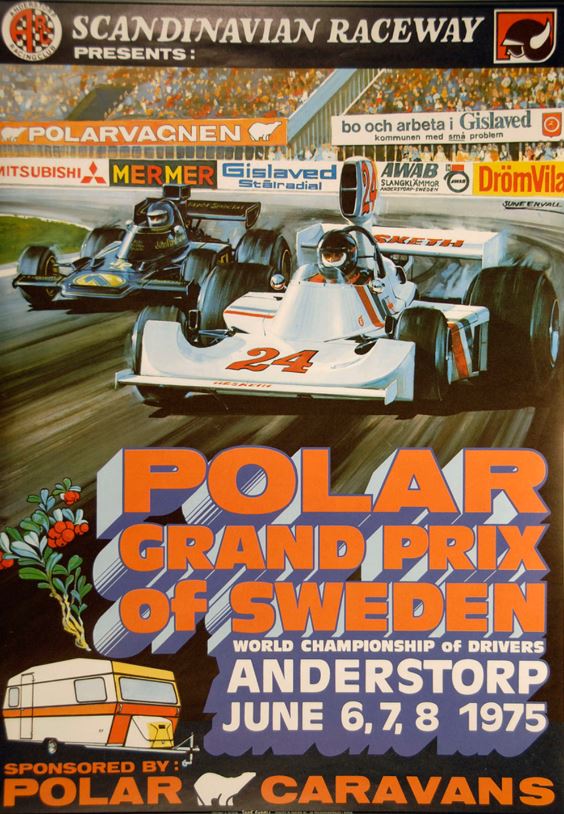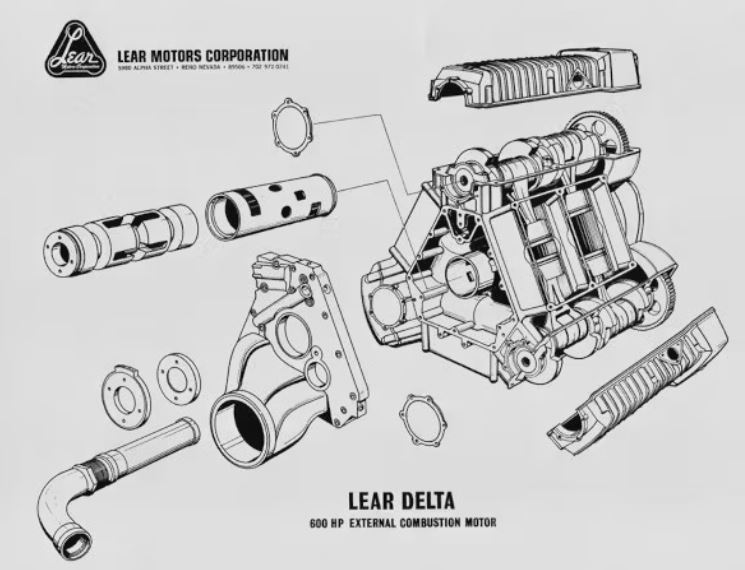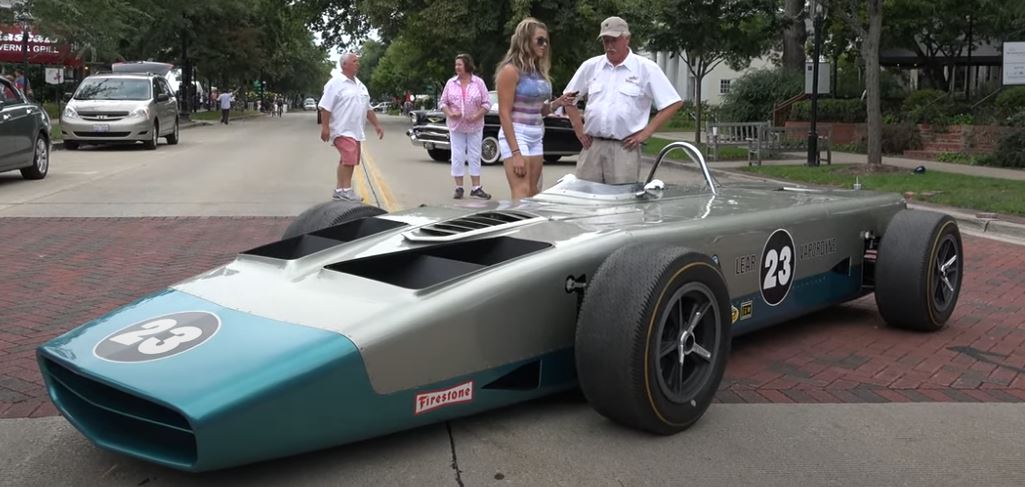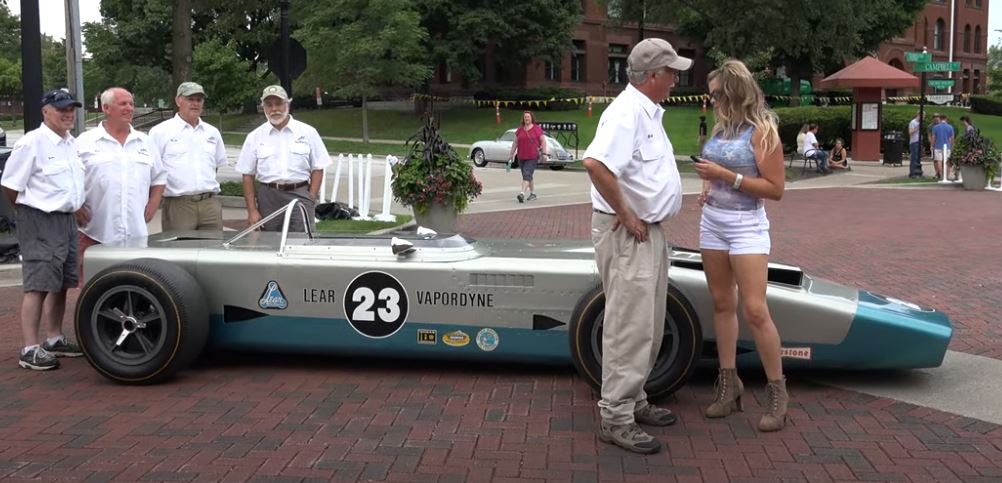www.F1scalemodels.com
... specialising in 1:43 scale model cars (Formula 1, Indy 500, Le Mans, GT and classic and modern road cars)
About www.F1scalemodels.com
Welcome to F1scalemodels (Dunefin Pty Limited). My name is Philip and this is my website (started in 2009) which is dedicated to the hobby of model car collecting. Apart from being a keen collector I'm also a part-time model car trader, trading primarily at several swap meetings and car events around the Sydney (Australia) area.
This site is always being updated and improved (hopefully) and the main purpose is to provide an up-to-date listing of models that are available for purchase at swap meets that I will be attending. As you can imagine it would be impossible to have all my stock at any swap meet, so if there are any particular model(s) that you're interested in, please contact me and I'll make sure I bring them along to the next swap meet. This is an obligation-free service.
Check out the link called "Motorsport Gallery" where I've posted some motorsport related photos. These are some of the photos I've taken over the years at various events.
Mail Order
I've been asked a few times now if I do mail order; the answer is yes. So far I've posted to a number of interstate collectors and also to USA, UK, Estonia, Hungary, Portugal, Sweden, Switzerland, France, Austria, Italy, Belgium, Canada and Malaysia. Australian collectors have a choice of payment options; Direct bank deposit, money order or Paypal. International collectors will need to pay via Paypal. Please contact me with the details of the models you're interested in and I will provide you with a firm quotation for postage.
Swap Meets
I'm planning to attend the following swap meets and events in 2025; please go to the Swap Meets link for dates and other details.
- Sydney Toy and Hobby Fair (Epping)
- Collector Con Penrith
- Shannons Eastern Creek Classic
- Hawkesbury Model and Hobby Show
- All British Day
- Hunter Toy and Hobby Fair
Contact Me
Mobile: 0417 428 668
Email: info@f1scalemodels.com
Updates
This website is updated regularly (at least once a month) with new additions and important or interesting information related to the hobby. All new Recent and Restocked items will be marked with an "R" in the stocklists so please check these lists regularly. I hope you find these updates helpful.
New Additions: June 2025
Welcome to the June update and the start of winter. As the days get colder and shorter, it's a great time to focus on your indoor hobbies, like your prized collection of model cars. Perhaps it's time to rearrange the display cabinet(s) and to assess what's missing from your collection. Maybe I can help with the last part! But before I continue, I'd like to thank all those who dropped by my stall at last weekend's Collector Con at Penrith. The Collector Con certainly draws in a big crowd, unfortunately most are not model car collectors; they are there mostly for the action figures, trading cards and other toys. I will be attending one more Collector Con in November and I will then decide if it's worth attending next year. OK, back to the models. I did receive some models and there's one that is really interesting.
The Mercedes-Benz C111 was a series of experimental automobiles produced in the 1960s and 1970s. Mercedes was experimenting with new engine technologies, including Wankel engines, diesel engines, and turbochargers, and used the basic C111 platform as a testbed. Other experimental features included multi-link rear suspension, gull-wing doors and a luxurious interior with leather trim and air conditioning. The first version of the C111 was completed in 1969. The car used a fiberglass body shell and with a mid-mounted three-rotor direct fuel injected Wankel engine. However, Mercedes decided not to adopt the Wankel engine and turned to diesel experiments for the second and third C111s. The C111-IID's engine was a Mercedes-Benz OM 617, and produced 140 kW (188 hp). Neo's 1:43 scale C111-IID would be a welcome addition to any Mercedes collection.
 Mercedes-Benz C111-IID in the Mercedes Museum.
Mercedes-Benz C111-IID in the Mercedes Museum.
OK, that's it for another month, so what's on in June? It's going to be a relatively quiet month with just the regular Sydney Toy and Hobby Fair on 6th June at the Epping Creative Centre, 26 Stanley Road, Epping. Until next month, happy collecting.
American Racing Series
- 1986 March 83G Porsche, Adams/Hotchkis (00) Riverside 6 Hour 6th (Spark)
- 1973 Porsche 917/30 Turbo Spyder, M.Donohue (6) Can-Am Mosport 7th (Spark)
- 1982 Porsche 935 JLP-3, John Paul/John Paul Jr.(46) Road Atlanta 500K 1st (Spark)
- 1984 Porsche 962, Holbert/Bell/Adams (14) Watkins Glen 3Hr IMSA 1st (Spark)
- 1988 Porsche 962C, Wollek/Baldi/Redman (67) Daytona 24 Hrs 2nd (Spark)
- 1989 Porsche 962C, Herzog/Hytten (2) IMSA Sears Point (Spark)
Road Cars
- 1966 Chevrolet Nova SS Hardto in metallic dark green (Neo)
- 1952 Cunningham C3 Continental Coupe by Vignale in silver/metallic grey (Neo)
- 1976 Mercedes-Benz C111-IID in metallic orange (Neo)
After Thoughts: "Tarf Bisiluro: Piero Taruffi’s Twin-Torpedo Record Breaker."
In the world of record-breaking race cars, few have ever matched the futuristic design of the Italcorsa Tarf, also known as the Bisiluro, meaning “Twin Torpedo” in Italian. Designed and driven by Piero Taruffi, an Italian racing driver and engineer, the Tarf was not only revolutionary in appearance but in performance, setting an astounding 22 international speed records between 1948 and 1957. Piero Taruffi was a competent race driver who competed in Formula One from 1950 until 1956. During his F1 career he drove for some big teams, like Mercedes-Benz, Ferrari, Maserati and Alfa Romeo. During his career he won a couple big events, the 1952 Swiss Grand Prix and the last-ever Mille Miglia in 1957.
 Tarf I displayed at the Turin National Automobile Museum
Tarf I displayed at the Turin National Automobile Museum
A mechanical engineer by training, Taruffi authored several books on racing technique and automotive engineering but his biggest dream was to completely redesign the race car. So in 1948 he came up with the Italcorsa/Tarf I. The Tarf wasn’t just ahead of its time—it looked like it came from another planet. Built on two separate steel tube chassis wrapped in aerodynamic "teardrop" cladding, the car was split into two distinct fuselages: the left pod housed the driver, while the right pod contained the engine, transmission, and fuel tank. Each component was optimized for speed and aerodynamics, with all-independent suspension and chain-driven rear wheels.
 Tarf I with Taruffi preparing for a run
Tarf I with Taruffi preparing for a run
The first version of the car, the Tarf I, debuted in 1948 and was powered by a modest 500cc Moto Guzzi V-Twin, producing around 50 horsepower. Weighing just 300 kg, this minimalist missile was able to reach speeds up to 208 km/h (130 mph)—an astonishing feat for such a small-displacement engine. With it, Taruffi claimed six 500cc class records in his first major outing. Encouraged by early success, Taruffi imagined even more radical iterations of his twin-torpedo concept. One concept, the Trisiluro, proposed adding a third torpedo-shaped fuselage, but it never made it past the drawing board.
Instead, he refined his vision in the Tarf II, which reversed the placement of the driver and engine. This version included adjustable rear fins to compensate for wind direction—an early take on aerodynamic tuning—and ditched the traditional steering wheel in favor of dual levers, one on each side of the cockpit. The gearbox and clutch were operated by hand levers positioned between the driver's legs, while braking was handled hydraulically on all four wheels. Most significantly, the Tarf II was equipped with a 1.7-litre Maserati four-cylinder engine, enhanced by a two-stage supercharger that delivered 270 horsepower—more than five times the power of its predecessor.
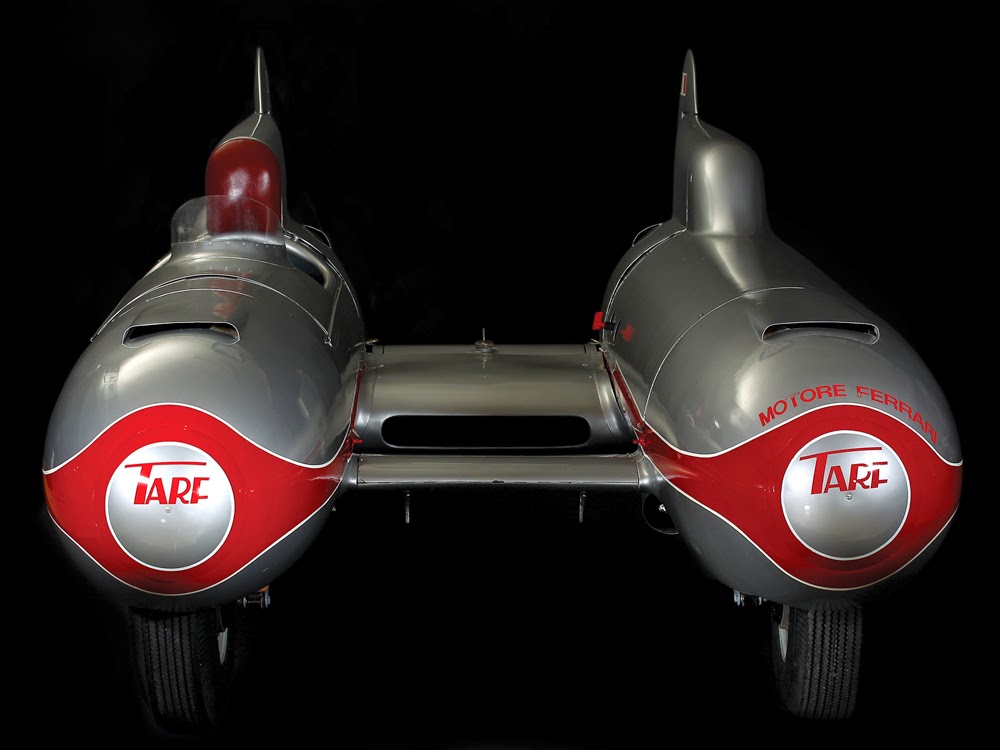 Tarf II, cockpit is on the right hand torpedo
Tarf II, cockpit is on the right hand torpedo
The Tarf II made an explosive debut in March 1951, immediately setting two world records for the flying mile and kilometre with speeds of 185.5 mph (298.5 km/h) and 180.5 mph (290.5 km/h), respectively. In January 1952, it went on to break four additional speed records:
50 km – Average speed of 140.9 mph (226.7 kph)
100 km – Average speed of 139.7 mph (224.8 kph)
200 km – Average speed of 136.6 mph (219.8 kph)
One-hour run – Average speed of 135.1 mph (217.4 kph)
These achievements firmly established the Tarf as one of the most advanced and effective land speed machines of its time. Taruffi had dreams of taking his radical design even further; a Tarf powered by a 4.5-liter Ferrari engine, intended for competition in the Indianapolis 500. That car was never built.
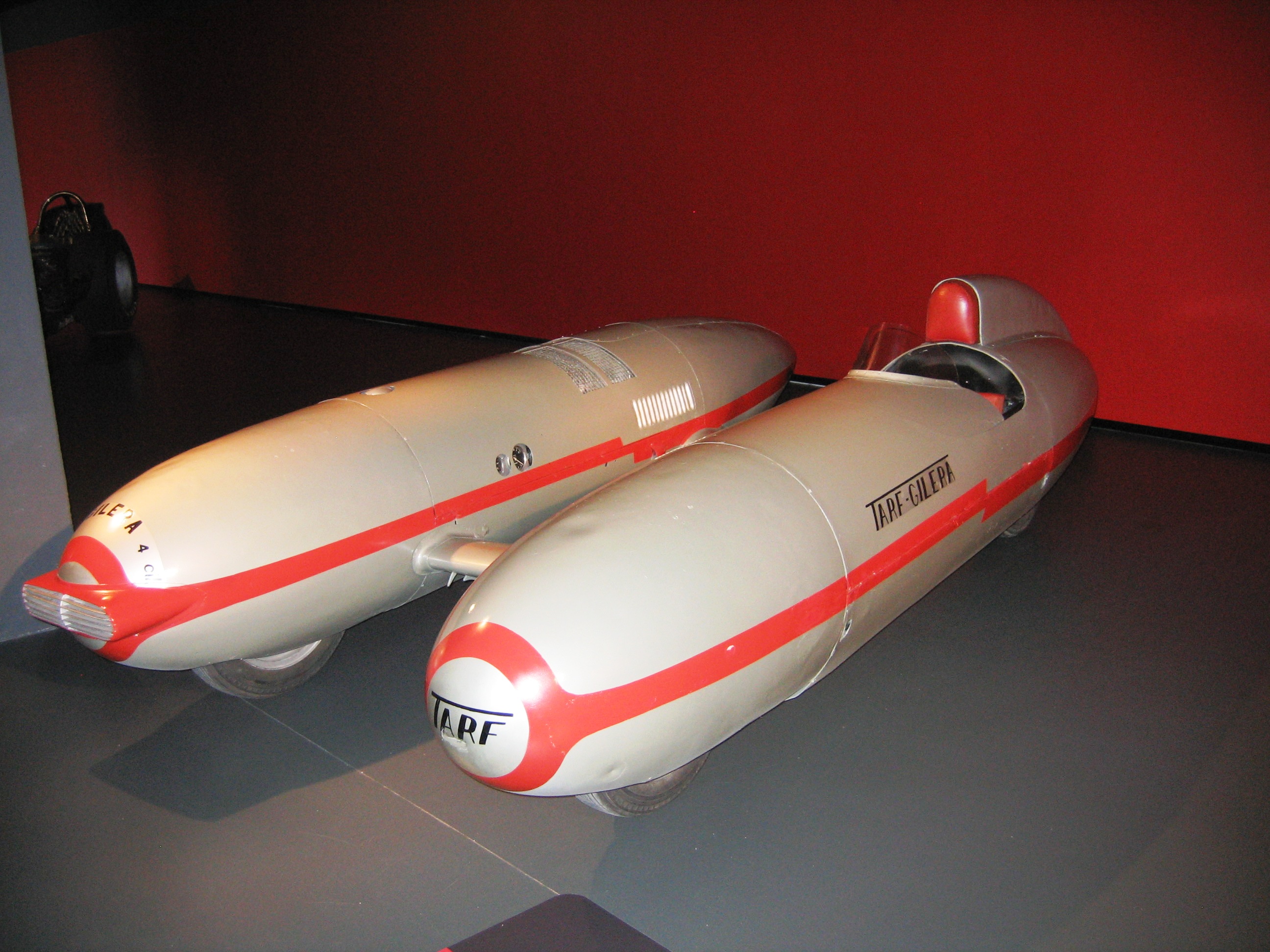 Tarf I at the Turin National Automobile Museum
Tarf I at the Turin National Automobile Museum
Reflecting on his creation, Taruffi once said: “The importance of my car is that it embodies many new principles that will become standard in automobiles ten years from now.” While the twin-torpedo layout never became mainstream, many of the ideas—independent suspension, lightweight materials, aerodynamics, and alternative control layouts—have shaped the development of high-performance vehicles in the decades since.
 Vale: Jochen Mass, German F1 Driver. (30/9/46 - 4/5/25)
Vale: Jochen Mass, German F1 Driver. (30/9/46 - 4/5/25)
New Additions: May 2025
Welcome to the May update. A couple of parcels from Spark were delivered in April to finally break the two month drought. The first one contained just 1:5 helmets, mostly from the 2023 F1 season with one from the 2022 GT3 series. The second parcel had a bit of everything including a couple of models that are worthy of a special mention ...
The 1992 Tooheys 1000 was a sad occasion as popular veteran driver and 1967 Formula One world champion Denny Hulme, 56 years old from New Zealand, died of a heart attack suffered during lap 33. Hulme, driving the second Benson & Hedges Racing BMW M3 with Paul Morris, started the race in 18th position. On lap 33 when the race was under heavy rain, Hulme radioed to his team while coming through Forrest's Elbow that he could not see. Coming down Conrod Straight, the yellow #20 BMW went off the track and glanced the wall on the left hand side before continuing across the track to the outside wall where the car came to a stop. While the race continued under the safety car, Hulme was removed from the car and taken by ambulance to Bathurst Hospital where he was later pronounced dead from heart failure. The Hulme/Morris BMW has been reproduced by Spark with the full B&H livery.
 Spark: BMW E30 M3 1992 Bathurst 1000 (AS014)
Spark: BMW E30 M3 1992 Bathurst 1000 (AS014)
After returning to sports car racing in 1995, Nissan Motorsport (Nismo) had some success with the Skyline GT-R LM which had competed in the GT1 class. However, these cars were soon outpaced by the influx of new manufacturers who were using loopholes in the GT regulations to build racing cars that bore little resemblance to their GT1 class competitors, examples being the Mercedes-Benz CLK GTR and the Porsche 911 GT1. The Skyline GT-R therefore needed to be replaced with a purpose built racing car. Nismo turned to Tom Walkinshaw Racing (TWR) to develop a prototype to be called the R390 GT1 using a twin-turbocharged 3.5-litre V8 engine. The car's styling team was led by Ian Callum from TWR. Nismo and TWR also had to build at least one road legal version of the R390 GT1 in order to meet homologation requirements. Only one road legal R390 was built, which is currently in storage at Nissan's Zama, Kanagawa facility. This beautiful road car has been released by Spark, a must have for Nissan fans.
 Spark: Road version Nissan R390 GT1 (S3634)
Spark: Road version Nissan R390 GT1 (S3634)
OK that's it for another month, so what's on in May? There's a couple of shows starting with the regular first Friday of the month Sydney Toy and Hobby Fair on 2nd May at the Epping Creative Centre, 26 Stanley Road, Epping starting at 6:30pm. I will also be attending the Collector Con Penrith on 25 May at the Penrith Valley Regional Sports Centre, 30 Herbert Street, Cambridge Park starting at 9:30am. Until next month, happy collecting.
Formula One
- 2023 Alpha Tauri RBPT AT04, L.Lawson (40) 9th Singapore GP (Spark)
Australian Racing Series
- 1992 BMW E30 M3, Hulme/Morris (20) 'B&H Racing' Bathurst 1000 (Spark)
- 2023 Chevrolet Camaro, Van Gisbergen/Stanaway (97) 1st Bathurst 1000 (Biante)
- 2023 Porsche 911 GT3 Cup, C.Hedge (17) Porsche Carrera Cup Aust Champion (Spark)
American Racing Series
- 2020 Lexus RC F GT3, Montecalvo/Bell/van Gisbergen/Telitz (12)Daytona 24H (Spark)
- 1973 Porsche 917/10 Turbo, H.Wiedmer (4) Can-Am Mosport 2nd (Spark)
Le Mans / Sports Cars
- 1968 Ford GT40, Hawkins/Hobbs (5) BOAC 6 Hours 4th (Spark)
- 2021 Porsche 911 GT3 R, Campbell/Bamber/Jaminet (22) 1st Paul Ricard 1000 (Spark)
Road Cars
- 1998 Nissan R390 GT1 in metallic blue (Spark)
Helmets (1:5)
- 2023 F.Alonso Japanese GP (Aston Martin) (Spark)
- 2023 V.Bottas Australian GP (Alfa Romeo) (Spark)
- 2023 V.Bottas Monaco GP (Alfa Romeo) (Spark)
- 2023 P.Gasly (BWT Alpine) (Spark)
- 2023 K.Magnussen Miami GP Haas F1 (Spark)
- 2023 K.Magnussen Monaco GP Haas F1 (Spark)
- 2023 L.Norris Miami GP (McLaren Team) (Spark)
- 2023 L.Norris Monaco GP (McLaren Team) (Spark)
- 2023 L.Norris (McLaren Racing) (Spark)
- 2023 E.Ocon (BWT Alpine) (Spark)
- 2023 E.Ocon Miami GP (BWT Alpine) (Spark)
- 2023 E.Ocon Monaco GP (BWT Alpine) (Spark)
- 2023 O.Piastri Monaco GP (McLaren) (Spark)
- 2023 O.Piastri (McLaren Racing) (Spark)
- 2022 L.Vanthoor 2022 Nürburgring 24 Hr (Manthey) (Spark)
After Thoughts: "Formula One Team Owner Shot Dead in Gun Battle with Police."
It sounds like the plot of a pulp-fiction novel but in fact is a true story, worthy of re-telling. A man of many names, Klaus Walz appeared to be the saviour that Gerard Larrousse so desperately needed for his financially beleaguered Formula One team. But, he emerged as an extremely nasty criminal and serial killer whose short-lived ownership ended when he was shot dead after a shoot out with German police.
Gerard Larrousse's troubled F1 team was riding on the crest of a wave, at the end of 1990 season they finished 6th in the Constructor's Championship. The next season they lost the Lamborghini V12 engine and had to use the outdated Cosworth DFR V8 engine. The team scored only 2 sixth place finishes and team was again in severe financial difficulties, owing money to Lola (chassis supplier) and Hart (engine supplier).
For 1992, Larrousse's team got a new lease of life after convincing Venturi, a small French manufacturer of road-going supercars to take a 65% stake in the team. The team still struggled on track, with only one sixth place finish by mid-season. Venturi, realising their mistake in owning the team decided to pull the plug mid-year and sold its shareholding to an investment group called Comstock and it seemed the team's financial struggles were over. The man who headed Comstock was "Rainer Walldorf", a German businessman but unknown to Larrousse, his real name was Klaus Walz. Walz had had a short-lived international racing career, mostly in sports cars built by ToJ. He tried F2 but wasn't quick enough to qualify and disappeared from the racing scene until his return as the majority shareholder in the Larrousse team in 1992.
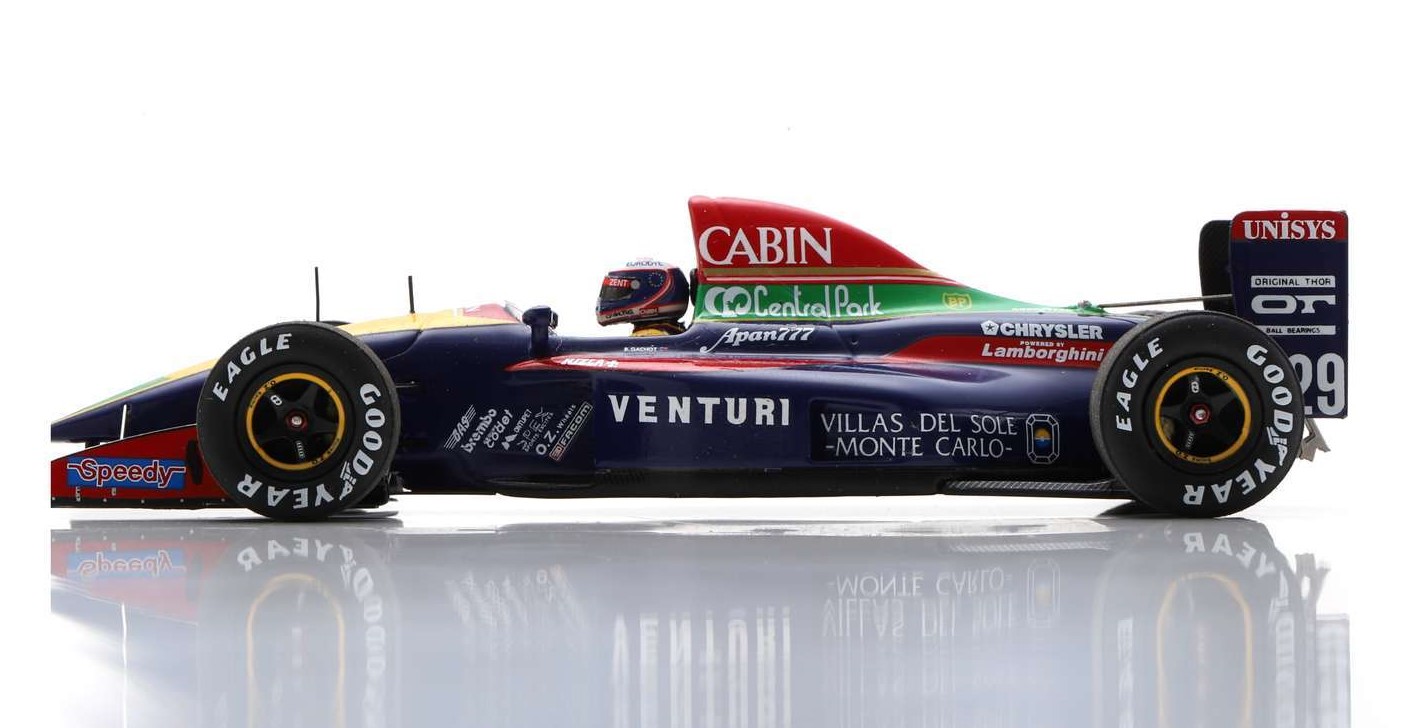 Spark: Venturi Larrousse LC92 (S6968)
Spark: Venturi Larrousse LC92 (S6968)
But only a few weeks after the announcement of Comstock's ownership, Walz's tenure as a team owner was over. Walz's partner in the Comstock organisation was his nephew, Gordon Walz and the two of them were the masterminds behind a vast criminal network handling high-value cars stolen to order. The centre of this operation was a large workshop in northern Italy where the re-birthing of the stolen cars took place. After a dispute with one of the Italian mechanics, the two Walzs murdered the mechanic, who knew too much, by forcing him into the boot of a car and setting it alight. They eventually were forced to release him and instead shot him to silence his agonisng screams. By the time Comstock was involved with Larrousse, police had connected the Walzs with three other murders. According to Interpol, there was possibly a fourth murder and Klaus and Gordon Walz were high on the list of most wanted criminals. When French police noticed the Comstock name on the Larrousse LC92 F1 car they suspected a connection to Klaus Walz.
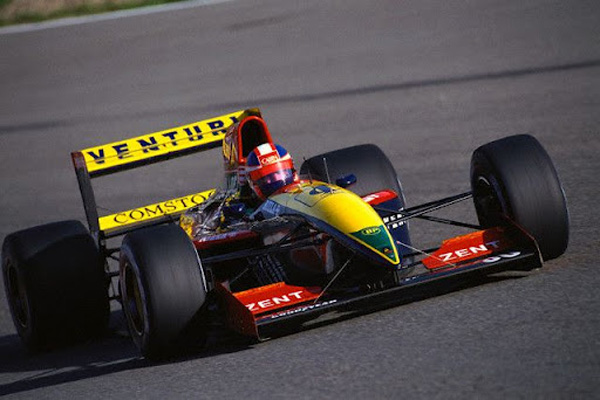 Larrousse LC92 with Comstock livery on rear wing
Larrousse LC92 with Comstock livery on rear wing
French police then tracked the pair to a villa near Nice and raided the house but incredibly the Walzs were able to escape from the inept police. The two fugitives then headed to Germany, but within a month German police had tracked them down to a Munich hotel. Learning from the mistakes of their French colleagues, the Bundespolizei had the hotel room surrounded while the Walzs barricaded themselves inside. After a nine hour stand-off, armed officers stormed in. In the ensuing gun battle, the younger Walz gave himself up while Kaus Walz shot himself dead.
So ended Klaus Walz's extremely short career as owner of a Formula One team through which he had planned to launder some of his illicit profits. The Larrousse teamed continued racing and battled on until 1995 when the team finally collapsed financially with Gerard Larrousse facing several lawsuits.
New Additions: April 2025
Welcome to the April update; it's going to be another short one with no new additions to report again. This will change next month, I promise! So, with no new additions, I thought I'd focus again on some models that were received earlier and deserved a mention.
The 1986 Indianapolis 500 was the 80th running of the great race. The 500 mile race was held on May 25, 1986, at the Indianapolis Motor Speedway. Bobby Rahal won the race, driving a March 86C-Cosworth for the Truesports team. Rahal's victory was his first at the Indianapolis 500 and he went on to win five more races during the 1986 CART season, eventually winning the championship. The Replicarz (R43034) March 86C #3 Budweiser is a high-quality 1:43 die-cast model that is perfect for any fan of Bobby Rahal or the Indianapolis 500. The model is accurate and detailed, and it is sure to be a prized addition to any Indy car collection.
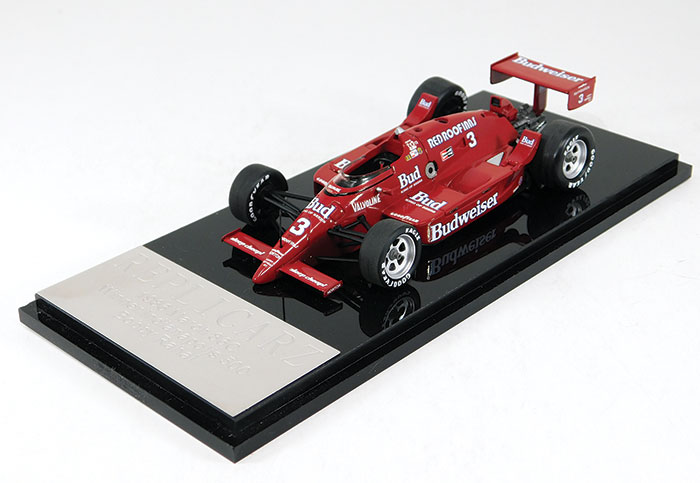 Replicarz: March 86C 1st Indy 500 1986
Replicarz: March 86C 1st Indy 500 1986
The 250 GT California Spyder was a sports car developed by Ferrari but was designed by Sergio Scaglietti, founder of Carrozzeria Scaglietti, an automobile design and coachbuilding company located across the road from Ferrari in Maranello. The Spyder, a convertible version of the Berlinetta was powered by a traditional Ferrari V12 engine and approximately 100 units were produced between 1957 to 1963. The model gained considerable recognition after its appearance in the 1986 film "Ferris Bueller's Day Off". Although the Ferrari 250 GT California Spyder was not specifically designed for competition, many models participated in endurance races. It won its class in the 12 Hours of Sebring in 1959, and again in 1960. The 1:43 model from Kess would be a welcome addition to your Ferrari or sports car collection.
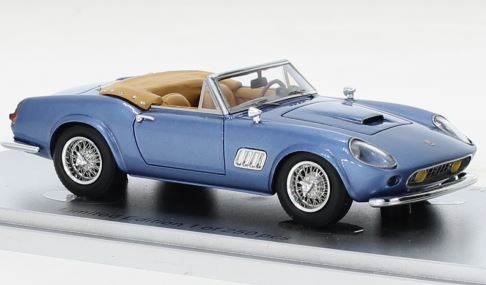 Kess: Ferrari 250GT California Spyder (KE43058002)
Kess: Ferrari 250GT California Spyder (KE43058002)
OK, that's another monthly update wrapped up. So, what's happening in April? The regular Sydney Toy and Hobby Fair is on 4th April at the Epping Creative Centre, 26 Stanley Road, Epping starting at 6:30pm and finishing around 8:00pm. There is a Collector Con on 27 April in Newcastle, but I will not be attending this event. That's it, another fairly quiet month for Toy Fairs, so until next month, happy collecting.
After Thoughts: "Unheralded F1 Driver Series #9 - Brian Redman."
Brian Redman is one of the greatest endurance and sports car racers of all time, with a career spanning multiple disciplines, including Formula One, endurance racing, and Formula 5000. His versatility, reliability and sheer talent made him a much sought-after driver in a career spanning over three decades.
Redman was born on March 9, 1937, in Lancashire, England and made his racing debut in 1959 with a Morris Minor Traveller that he had supercharged for speedy grocery deliveries while working for his father's grocery chain. The talented delivery driver eventually caught the attention of John Wyer in 1967 and was asked to join Jacky Ickx in their GT40 at Kyalami for the 9 Hour race. They won and Brian was signed up for a full-time drive. He also signed with Cooper to join their F1 team.
He was also approached by Ferrari for their F2 team. Following a test, he drove a Dino 166 in the Eifelrennen on the Nürburgring Südschleife. After a stone smashed his goggles and injured his eye, he made his way back to the pits only to be ordered to get back into the race with a new pair of goggles. From last and 2 minutes and 15 seconds off the lead, he finished 4th, breaking the lap record on the way. That evening he was offered a contract with the Scuderia for F2 that year and F1 in 1969. Redman famously turned them down.
His F1 debut was at the South African GP on January 1st, 1968 but was forced to retire his Cooper Maserati. In his next race he came third at the Spanish GP but then had a massive accident at Spa after a wishbone failure. The car vaulted the barriers and Redman suffered a serious break to his right forearm which required two steel pins. He was sidelined for the rest of the year and still has the two steel pins in his arm. By the end of his F1 career he had participated in 15 World Championship Grands Prix, driving for Cooper, Williams, Surtees, McLaren, BRM, and Shadow. Apart from his podium in 1968, he achieved two 5th places scoring a total of 8 championship points in a sporadic career spanning six years.
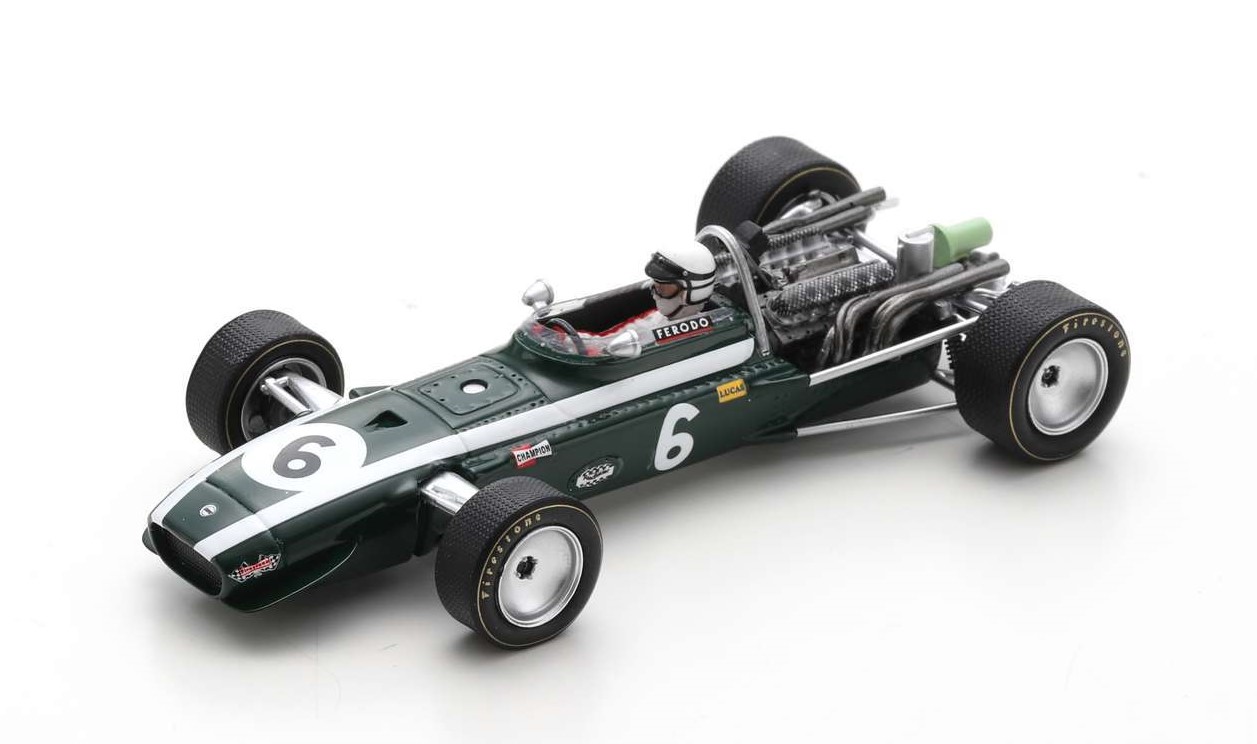 Spark: Cooper BRM T86B 5th Brands Hatch ROC 1968 (S6980)
Spark: Cooper BRM T86B 5th Brands Hatch ROC 1968 (S6980)
In 1972 he was approached by Ferrari again and this time he signed to race the 312PB in long distance races. He was with them for two years, first with Regazzoni then partnering with Ickx. During his second year he started racing in F5000 in the USA. At the end of the year he left Ferrari and moved to the States where he became very successful with Jim Hall and Carl Haas, winning the US F5000 title three years running, in 1974, 1975 and 1976. He also achieved spectacular success in sports-car racing driving for various teams, his key achievements included:
- Spa-Francorchamps 1000 km: 5-time winner.
- Nürburgring 1000 km: 3-time winner.
- 12 Hours of Sebring: 2-time winner.
- 24 Hours of Daytona: 2-time overall winner.
- Targa Florio (1970): Overall victory.
- Monza 1000km, Brands Hatch 6 Hrs, Österreichring 1000km, Kyalami 9 Hrs: Multiple wins in each.
 Spark: BMW 3.0 CSL 1975 1st Sebring (43SE75)
Spark: BMW 3.0 CSL 1975 1st Sebring (43SE75)
His stellar career nearly ended in 1977. During practice for the Can-Am race at Circuit Mont-Tremblant, his car launched 40 feet into the air at 160 mph, flipped, and landed upside down. He suffered a broken neck (C1 vertebra), fractured shoulder, sternum, and brain bruising. So severe were his injuries that he was declared dead at the scene but miraculously survived and made a full recovery. Redman returned to racing in 1978 and promptly won the Sebring 12 Hours in a Porsche 935.
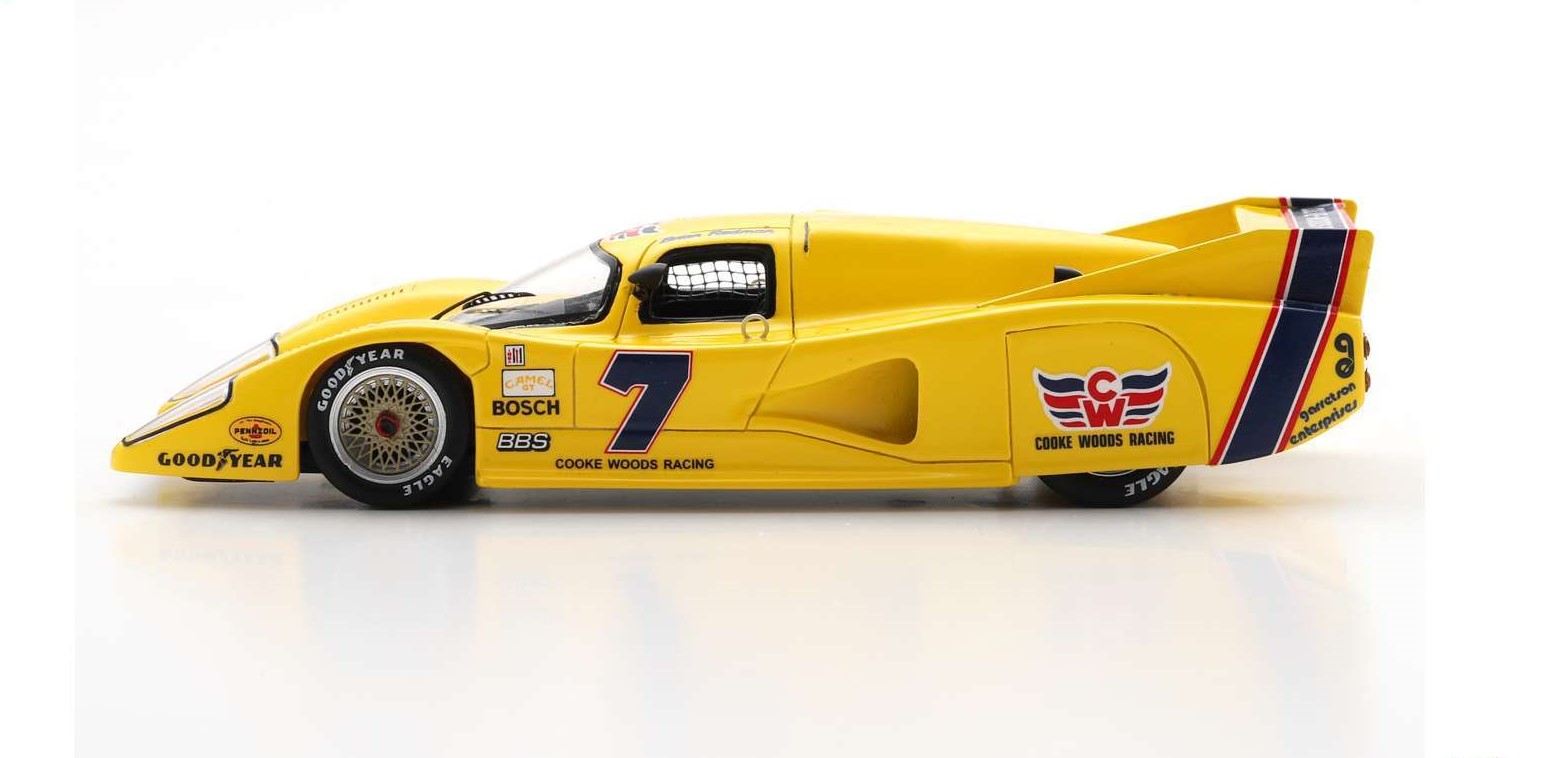 Spark: Lola Chevrolet T600 1981 1st Laguna Seca (S8601)
Spark: Lola Chevrolet T600 1981 1st Laguna Seca (S8601)
His racing career continued into his 50s, competing in IMSA, Jaguar’s Group 44, and Aston Martin’s factory-backed efforts. After retiring from professional racing he remained active in historic motorsport events as a promoter and ambassador. While his F1 tenure was brief, he achieved an incredible record in sports car racing, with victories in nearly every major endurance event. Brian Redman fully deserves his status as one of motorsport’s true legends.
 Vale: Eddie Jordan, F1 Team Principal. (30/3/48 - 20/3/25)
Vale: Eddie Jordan, F1 Team Principal. (30/3/48 - 20/3/25)
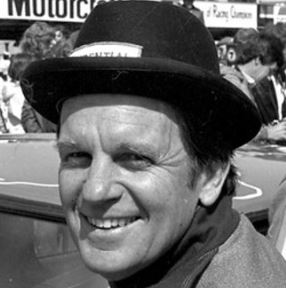 Vale: John French, Australian Touring Car legend (28/11/30 - 12/3/25)
Vale: John French, Australian Touring Car legend (28/11/30 - 12/3/25)
New Additions: March 2025
Welcome to the March update; it's amazing that we are already two months into 2025. I always look forward to March as many motor racing series start their championships. The first round of F1 begins in Melbourne on the 16th March and the attention will be on the "local" drivers Piasti, Doohan and Lawson. The Indy Cars kick off on 2nd March around the streets of St. Petersburg where we'll be cheering on the Antipodeans McLaughlin, Power, Dixon and Armstrong. The NASCAR Cup series has already completed two races with Van Gisbergen sitting in 34th position and the Australian Touring Car Championship roared into action on 21st February. The WEC held their first race on 28 February and lastly the MotoGP revs up on 2nd March at the Thai GP with Aussie Jack Miller riding a Yamaha. Ok, enough about motorsports now onto model cars; actually there is very little to report only that there are no new additions this month!!
With no new additions for March, I thought I'd revisit last month and focus on some models that I didn't but should've highlighted. Firstly, the three works Mazda R100's that raced at Spa in 1969 are featured in the "After Thoughts" section below. Finally, some photos of the Porsche 911 GT3 R's that were raced by Aussie and Kiwi drivers at the Spa 24 Hour races.
Well, that's another monthly update done and dusted. What's on in March? The regular Sydney Toy and Hobby Fair is on 7th March at the Epping Creative Centre, 26 Stanley Road, Epping starting at 6:30pm. The first Collector Con for the year will be on 30th March but I won't be attending this event. Also, I've had a few dates confirmed; the Hawkesbury Model and Hobby Show will be held on 20/21 September and the Shannons Sydney Classic is scheduled for 17th August. The Diecast Model Expo (organised by Motorfocus) will be held in Melbourne again this year on the weekend of 19-21 September while the Australian Diecast Expo 2025 (organised by Southern Diecast) will be in Adelaide on the weekend of 15-16 November. Ok, you are now up-to-date with what's going on in the model car world, until next month, happy collecting.
After Thoughts: "The Mazda R100 at the 1969 Spa 24 Hour"
Mazda’s rich pedigree in motorsport started back in the 1960's when Mazda’s engineers took on the challenge of making the rotary a viable alternative to regular piston engines. The smooth, free-revving and extremely compact Wankel engine offered a far superior power-to-weight ratio to conventional piston engines and the unmatched simplicity of a combustion cycle which required only one moving part. On the minus side the rotary didn’t mind a drink and its exhaust emissions were high, but in the 1960's such concerns were of little importance.
Having overcome the challenges that perplexed rival NSU, they then needed to prove the rotary technology on the world stage and so Mazda chose the toughest test of all, the 1968 Marathon de la Route. This was an epic 84-hour endurance race around the famously challenging Nürburgring circuit in Germany. After success in the 1968 Marathon de la Route with the Cosmo Sport [see After Thoughts October 2023], Mazda decided to enter the world famous Spa 24 Hour race in 1969.
A critical step for Mazda in its bid for global acceptance of the rotary was to install one in a normal passenger car, which could be mass-produced in series production.The donor model chosen was Mazda’s humble 1200 coupe, which was renamed the R100 with the ‘R’ denoting its rotary engine and the ‘100’ indicating its impressive horsepower output. On reflection, the R100 was in effect a production prototype for the high performance rotary powered ‘RX’ models which would soon follow. For the Spa 24 Hour three R100 coupes were entered by the factory.
The R100’s twin-rotor one-litre engine produced 200bhp at 9,000rpm, while the unsilenced noise of the rotary engine left European fans in no doubt about the unique engine under the bonnet. With only 805 kg to propel, the swoopy fastback could clock the standing quarter in less than 18 secs with a top speed of 110 mph (175 km/h). However the R100 wasn’t as composed through the corners. It was very narrow and tall relative to its length, resulting in lots of body roll and some fearful roll oversteer at high speeds.
With a history dating back nearly as long as Le Mans, the Spa 24 Hour was a prestigious event in the European calendar and the ultimate test of racing cars representative of products customers could buy in showrooms. Held on the ultra-fast and dangerous 14km Spa Francorchamps circuit, the R100's competition came from a huge multi-class grid comprising of BMWs, Lancias, NSUs, Gordinis, Minis, Alfa Romeos and Porsches. It was assumed the outright fight would be between the thoroughbreds from Porsche and BMW.
After the BMW challenge faded the factory-backed Porsche 911s finished a resounding 1-2-3-4, but what most observers had not expected to see after 24 hours were two of the Mazda R100s nipping at their heels in fifth and sixth. The third Mazda had been eliminated in an accident earlier in the race that tragically claimed the life of Mazda driver Leon Dernier.[1] In an astonishing first-up display of twice-around-the-clock durability, the little rotary-powered rockets just kept going and going, displaying competitive speed and faultless reliability while many of their piston-engined rivals fell around them. From that point on the R100 was known as the “Little Giant” in Europe.
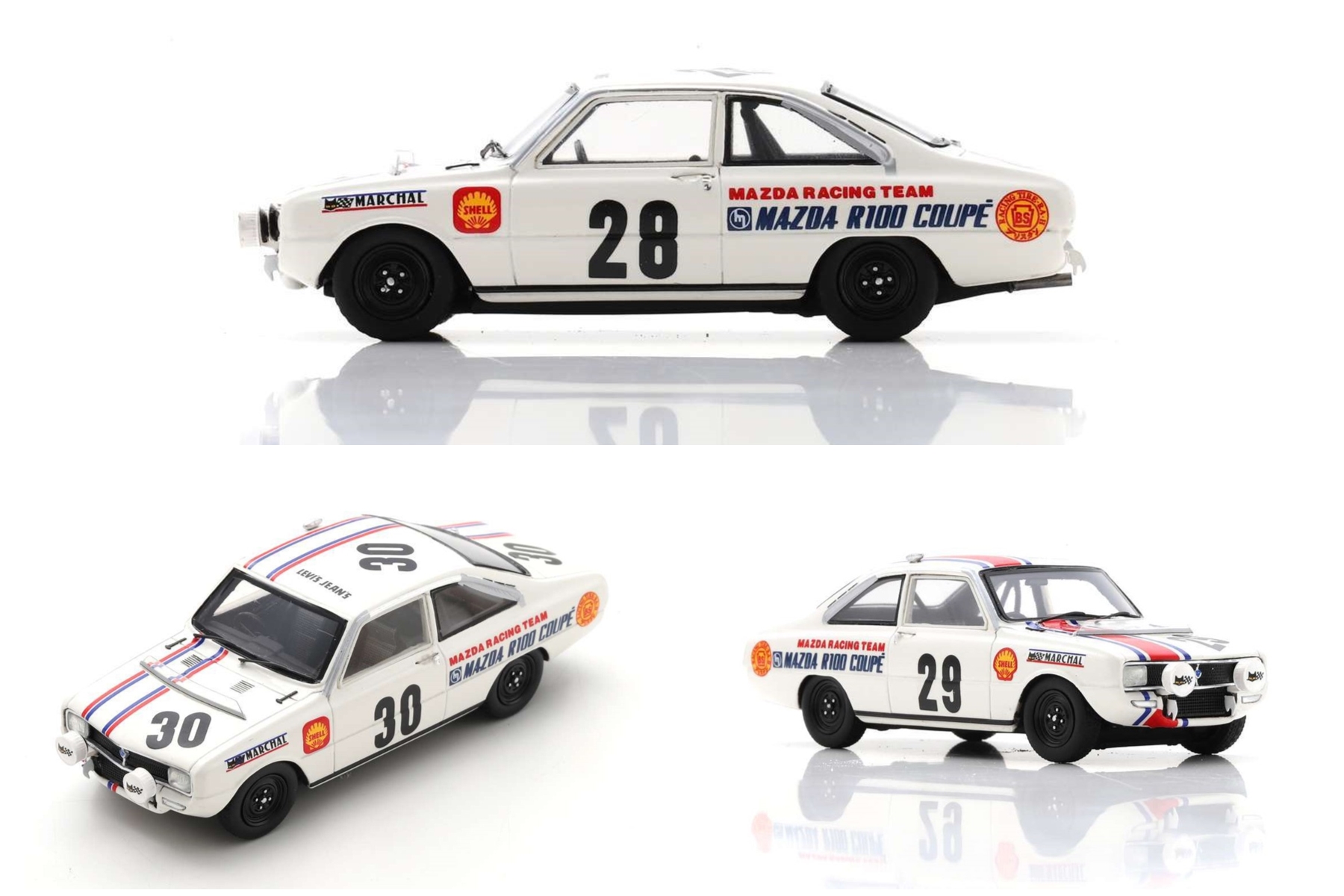 Spark models: Works Mazda R100 Coupes at Spa 1969
Spark models: Works Mazda R100 Coupes at Spa 1969
Note 1: Leon Dernier competed under the racing name of Eldé, probably because "dernier" means "last" in French, he was 57 year-old.
New Additions: February 2025
Welcome to another monthly update. January is always a slow month with many people taking their summer holidays but now we are truly into the new year and we can start to get excited about model cars again! A nice shipment of Spark models arrived last month, consisting mainly of Porsche 911 GT3's that raced at the Spa 24 hour by various Australian and NZ drivers and also some interesting rotary Mazdas that raced in 1969. In addition, some road cars by Kess and Goldvarg were also received as well a beautiful Camaro from TSM. Here are a couple of my highlights.
The Brabham BT23C that Jochen Rindt tested at the F2 Albi GP in 1968 was reminiscent of the early days of powered flight when men flew in contraptions of fabric and wood, lashed together with a healthy dose of optimism. The story of the BT23 started in 1967 when it was designed as a Formula two racing car, although some cars were later converted for F1 by private drivers. A revised version, the BT23C was put into production for the '68 F2 season and an early adopter was Roy Winkelmann Racing. The Winkelmann squad were in at the start of F2 back in 1964 and they had signed a new talented driver by the name of Rindt in 1965. The late '60's through to the early '70s was a period where designers and engineers sought to understand the aero effects on their cars so Rindt's BT23C sported a mid-mounted 'biplane' wing for a test session at the '68 Albi GP. Rindt won six races (without the wing) and dominated the 1968 F2 season. Spark has produced this weird and wonderful car in the Winkelmann Team racing colour of dark green, with its distinctive silver nose and stripe (SF251).
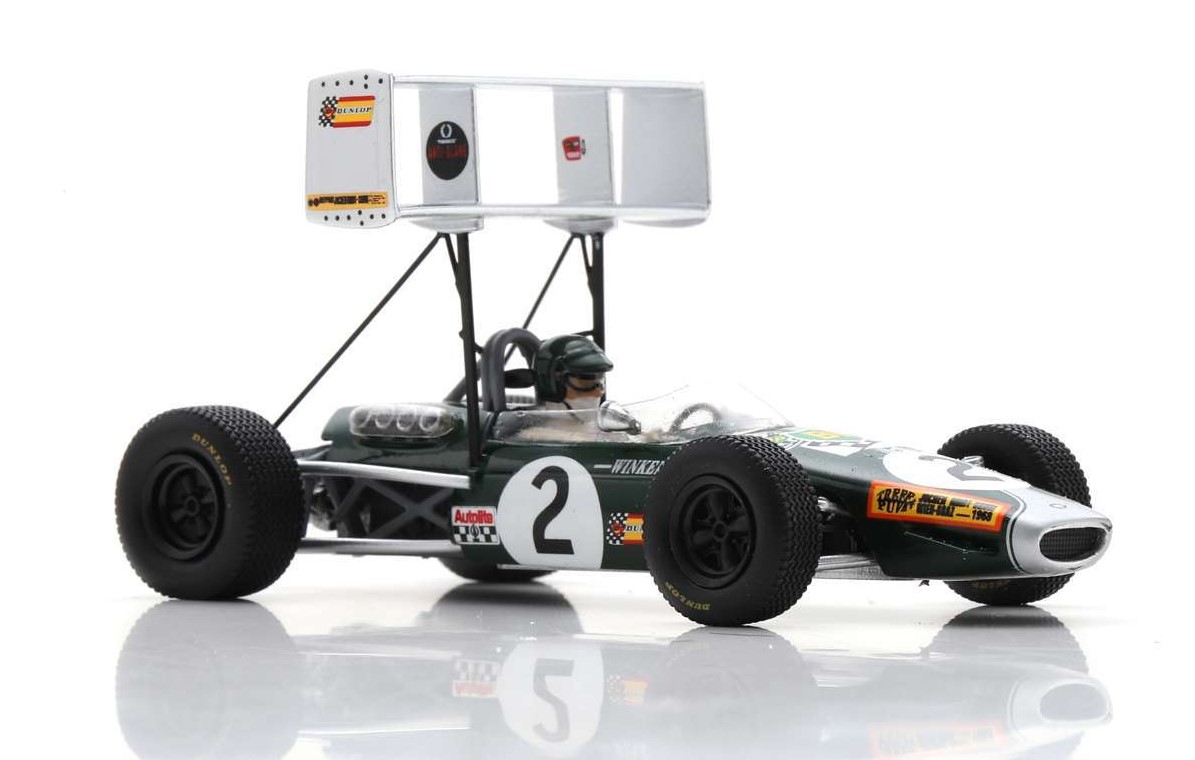 Spark: Brabham BT23C test at the '68 F2 Albi GP
Spark: Brabham BT23C test at the '68 F2 Albi GP
After being absent for two years, Garage 56 returned to Le Mans in 2023. The Garage 56 concept is to allow the testing of new automotive technologies and in 2023 a modified Next Gen Chevrolet Camaro ZL1 NASCAR fielded by Hendrick Motorsports was chosen to compete in the "Innovative Car" class. The Camaro ZL1 received numerous aerodynamic updates, carbon brake discs, functional front and rear headlights, and a larger fuel cell, which reduced its weight by 238 kg compared to the NASCAR Cup Series model. Mike Rockenfeller, the 2010 Le Mans co-winner, joined 2009 F1 World Champion Jenson Button and seven-time NASCAR Cup Series champion Jimmie Johnson as the drivers. After 20 hours of trouble-free running, the Camaro was ahead of the entire LMGTE field but then suffered a drive line issue which required over an hour in the pits to repair. Ultimately the team finished in 39th place out of 62 cars that started. TSM has produced this interesting model in both 1:43 and 1:18 scales and they have also produced a "raced" (dirty version) in both scales. These are high quality sealed resin cast models.
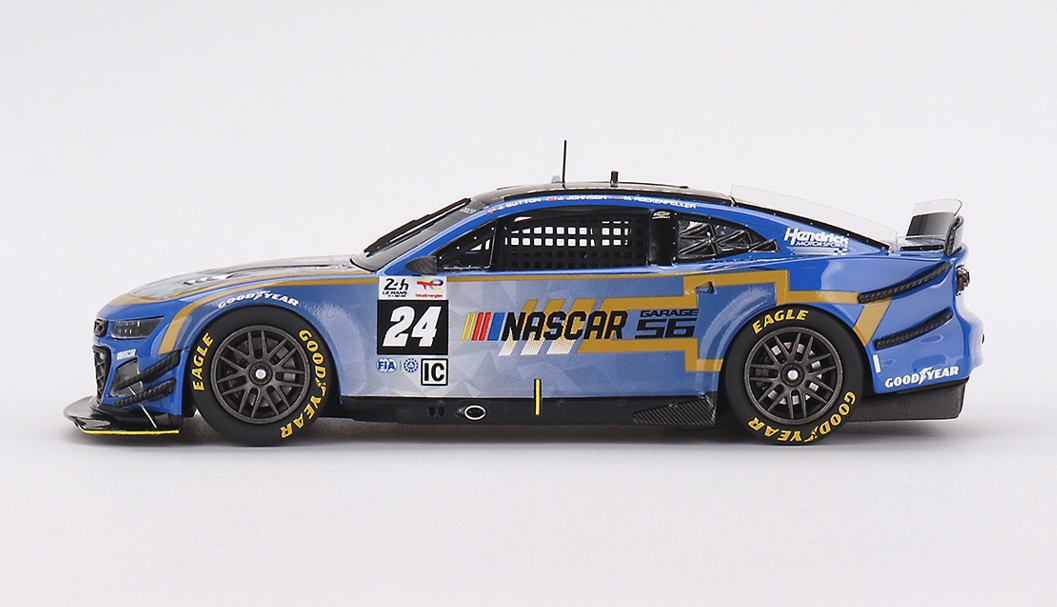 TSM: Camaro ZL1 Le Mans 2023 (TSM430793)
TSM: Camaro ZL1 Le Mans 2023 (TSM430793)
OK, that's it for another month. Only one event is scheduled for February and it's the regular Sydney Toy and Hobby Fair on the 7th. It is held at the Epping Creative Centre, 26 Stanley Road, Epping starting at 6:30pm. Until next month, happy collecting.
Formula One/Two
- 1968 Brabham Ford BT23C, J.Rindt (2) Essais GP d'Albi F2
- 2023 Dallara Mugen SF23, L.Lawson (15) Japanese Super Formula
- 1970 Matra MS11-12, J.P.Beltoise (90) 1st course de Côte du Mont Dore
American Racing Series
- 1986 March Cosworth 86C, B.Rahal (3) "Budweiser" 1st Indy 500
Australian Racing Series
- 2016 Commodore VF, W.Davison/J.Webb (19) winner Bathurst 1000
Le Mans/Sports Car Racing
- 2023 Chevrolet Camaro ZL1, Button/Rockenfeller/Johnson (24) Le Mans Garage 56
- 1969 Mazda R100 M10A, Katakura/Takechi (28) 6th Spa 24Hr
- 1969 Mazda R100 M10A, Deprez/Katayama (29) 5th Spa 24Hr
- 1969 Mazda R100 M10A, Elde/de Fierlant (30) Spa 24Hr
- 1967 Mirage Ford M1, Ickx/Hawkins (3) 1st 1000km de Paris
- 2020 Porsche 911 GT3 R, Campbell/Pilet/Jaminet (12) 4th Spa 24Hr
- 2021 Porsche 911 GT3 R, Campbell/Bamber/Jaminet (22) Spa 24Hr
- 2022 Porsche 911 GT3 R, Campbell/Nasr/Jaminet (74) Spa 24Hr
- 2022 Porsche 911 GT3 R, de Silva/Grove/Grove/Payne (16) Spa 24Hr
- 2022 Porsche 911 GT3 R, Au/Tse/Pereira/J.Evans (9) Spa 24Hr
Road Cars
- 1961 Ferrari 250GT California Spyder in metallic light blue (open) (Kess)
- 1961 Ferrari 250GT California Spyder in red (closed) (Kess)
- 1965 Mercury Park Lane in Breezeway Aquamarine (Goldvarg)
- 1949 Triumph Roadster in red (closed) (Kess)
After Thoughts: "The Forgotten F1 Circuits #7 - Anderstorp Raceway ."
Anderstorp Raceway, formerly known as Scandinavian Raceway, is a motorsport venue located in Anderstorp, Sweden. It is the only Nordic country to host F1 World Championship races when the Swedish GP was held for six years between 1973 to 1978. Constructed on marshlands and opened in 1968, the 4.025 km track incorporates a mix of technical, twisty sections and the Flight Straight, a long straight that doubles as an aircraft runway. The inclusion of an airfield as part of the circuit was a practical decision, ensuring a daily flight connection to Stockholm and thus securing additional financing during its construction. The track also features banked corners, presenting a challenge for drivers and engineers alike. The combination of the high-speed straight and technical corners required a well-balanced car setup to achieve fast lap times. And, unusually, the pit lane is located halfway through the lap, a rarity in racing circuits.
The first race was an international sportscar race in June 1968 and the Swedish GP was held six times between 1973 and 1978, coinciding with the peak of Swedish racing stars Ronnie Peterson and Gunnar Nilsson. In the inaugural Swedish GP, the local fans nearly got a dream race. They packed into the facility in droves to watch Peterson lead from pole position in his Lotus and he was never headed until, cruelly, fate intervened and a slow puncture in the closing stages allowed Denny Hulme to sweep by to victory in a McLaren. Sadly for the home crowd, Peterson and Nilsson never tasted victory in their home event and by 1979 both were dead; Peterson killed at Monza and Nilsson succumbing to cancer. With their deaths, corporate and public support for the Swedish GP dwindled and the race was quietly removed from the F1 calendar after 1978. The circuit was also noteworthy because it was the site of the first and only win of two unconventional F1 cars: the six-wheeled Tyrrell P34 car in 1976 and the infamous Brabham 'fan car' in 1978.
Apart from F1, the track hosted the Swedish Motorcycle GP, the European Touring Car Championship, Superbike World Championships and FIA GT Championships. In 1993, the circuit held a 24-hour motorcycle race, but financial issues stemming from poor attendance led to the track's bankruptcy. International racing returned briefly to Anderstorp in 2007 but the Covid pandemic prevented further events planned for 2020. Since 2007, the circuit has maintained a domestic-based calendar and ongoing issues over noise complaints have led to the circuit's calendar being more restricted.
 E.Fittipaldi 1973 Swedish GP (Photo; M.Lepola)
E.Fittipaldi 1973 Swedish GP (Photo; M.Lepola)
New Additions: January 2025
Welcome to the first update for 2025. I hope everyone had a safe and relaxing time during the festive break and I wish you all the best for the new year. Last year was a difficult year for everyone with all of cost of living challenges and I realise model cars were often the furtherest from our minds. There are signs that the worst may be over so maybe this year we can again enjoy our hobby of collecting model cars. Only a small number of models were received this month and as I'm seriously trying to reduce my inventory, you may have noticed the number of new arrivals have gotten a lot smaller. I am committed to stocking the models I have pre-ordered with my suppliers. The arrivals this month have a strong Japanese flavour and a couple of race cars are particularly noteworthy.
When most people think of 1960s sports car racing, the Ford GT40, Ferrari 330P, or the Porsche 917K come to mind. The Daihatsu Motor Company certainly doesn't figure when thinking about this era. The Japanese manufacturer is not very well known today after it was purchased by Toyota in 1967, but in 1966 when still an independent manufacturer, Daihatsu used their popular Compagno compact passenger car as the base for their front-engined P3 prototype. The Daihatsu P3 featured a 1.3-litre twin-cam straight-four engine and was capable of producing about 100hp. The P3 made its competitive debut at the Japanese Grand Prix at the Fuji Speedway in 1966, where it won its class. It was also entered in the 1000 km of Suzuka in the same year, where it failed to finish. The following year, it was run in the Suzuka 12 Hours; the No.6 car won its class, and finished fourth overall. The P3 was succeeded by the P5, which was more powerful than the P3. The Ebbro version represents the P3 (no.3) that did not finish the Japanese Grand Prix in 1966 and would be an excellent addition to any collection of 60's race cars .
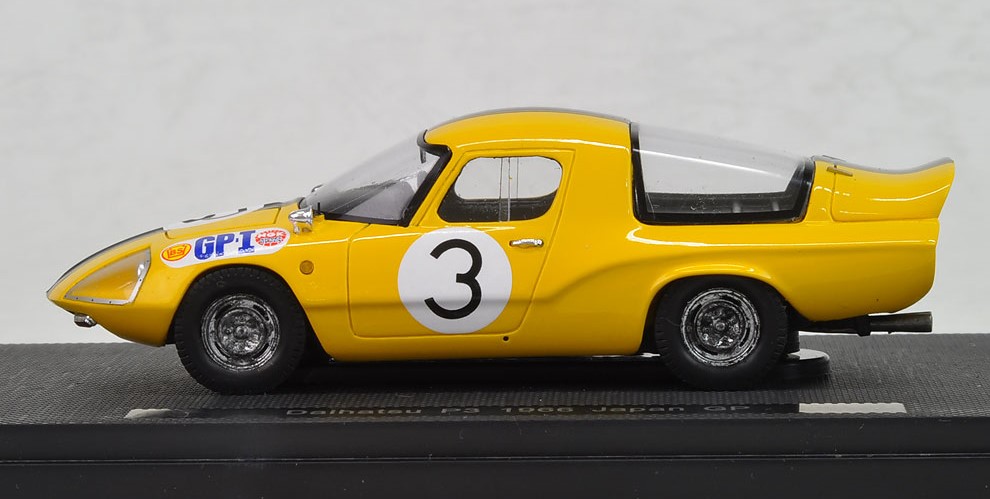 Ebbro: Daihatsu P3 1966 Japan GP (44367)
Ebbro: Daihatsu P3 1966 Japan GP (44367)
The 1966 Macransa Tojiro-III characterized post-war Japanese motorsport engineering; developed with ingenuity and perseverance in equal measure. Manufactured by Minoru Hayashi, who would later found the race car constructor Dome, the Macransa was based on the Honda S800, a lightweight roadster renowned for its 10,000 rpm twin-cam engine. Hayashi developed a FRP (Fibre-Reinforced-Plastic) monocoque to fit the S800 frame and to enhance performance, added a supercharger to the Honda engine. Domestic race cars built from the ground up were rare in the 1960’s, and most drivers with money imported exotic monsters like the Porsche 904. Against such opposition, the Macransa Tojiro-III debuted at the 1966 Japan Grand Prix, the country's premier motorsport event since 1963. However, an issue with the supercharger belt forced a retirement at its first race. The lessons Hayashi learned while developing the Macransa laid the foundation for Dome's future success, eventually becoming a leading Japanese race car constructor. Dome later offered Macransa kits to the public, allowing amateur builders to create their own S800-based race cars. Several of these vehicles continue to participate in vintage racing events today. The example modelled by Ebbro, which was driven by Rod Benders may have been one of these kit cars.
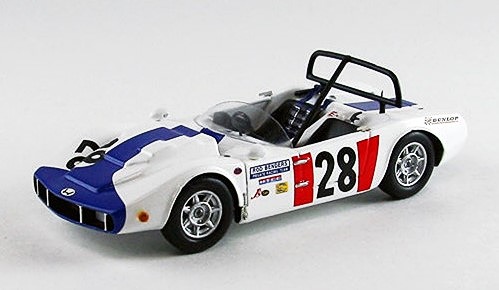 Ebbro: 1966 Macransa T-III (44641)
Ebbro: 1966 Macransa T-III (44641)
OK, that's it for my first update of the year. January is traditionally a quiet month with many on holidays but should you wish to enjoy the company of fellow collectors and vendors, then the first Sydney Toy and Hobby Fair is on the 3rd of January. Check out my Swap Meet link for upcoming events and dates for 2025. Happy New Year and until next month, happy collecting.
Le Mans / Sports Car Racing
- 1966 Daihatsu P3, H.Kukidome (3) Japan GP (Ebbro)
- 1966 Ford GT40 Mk ll, Miles/Hulme (1) 2nd Le Mans (CMR)
- Macransa T-iii, R.Bender (28) (Ebbro)
Road Cars
- 1958 Austin Healey Sprite Mk1 in red (Ebbro)
- 1938 Datsun 17 Sedan in blue (Ebbro)
- 1966 Nissan Prince Skyline 2000GT-B in red (Ebbro)
- 1989 Nissan Skyline GT-R (R32) in silver (Ebbro)
- 1995 Nissan Skyline GT-R (R33) in white (Ebbro)
- 2013 Nissan iDx Freeflow Concept in metallic beige/white (Ebbro)
- 1959 Wartburg 311 in blue (Maxichamps)
After Thoughts: "The Lear Vapordyne Steam-Powered Indycar ."
The Lear Vapordyne Indycar is one of the most fascinating and ambitious ventures in the history of motorsport. Despite its ultimate failure, the Vapordyne remains a prime example of unconventional thinking and innovation.
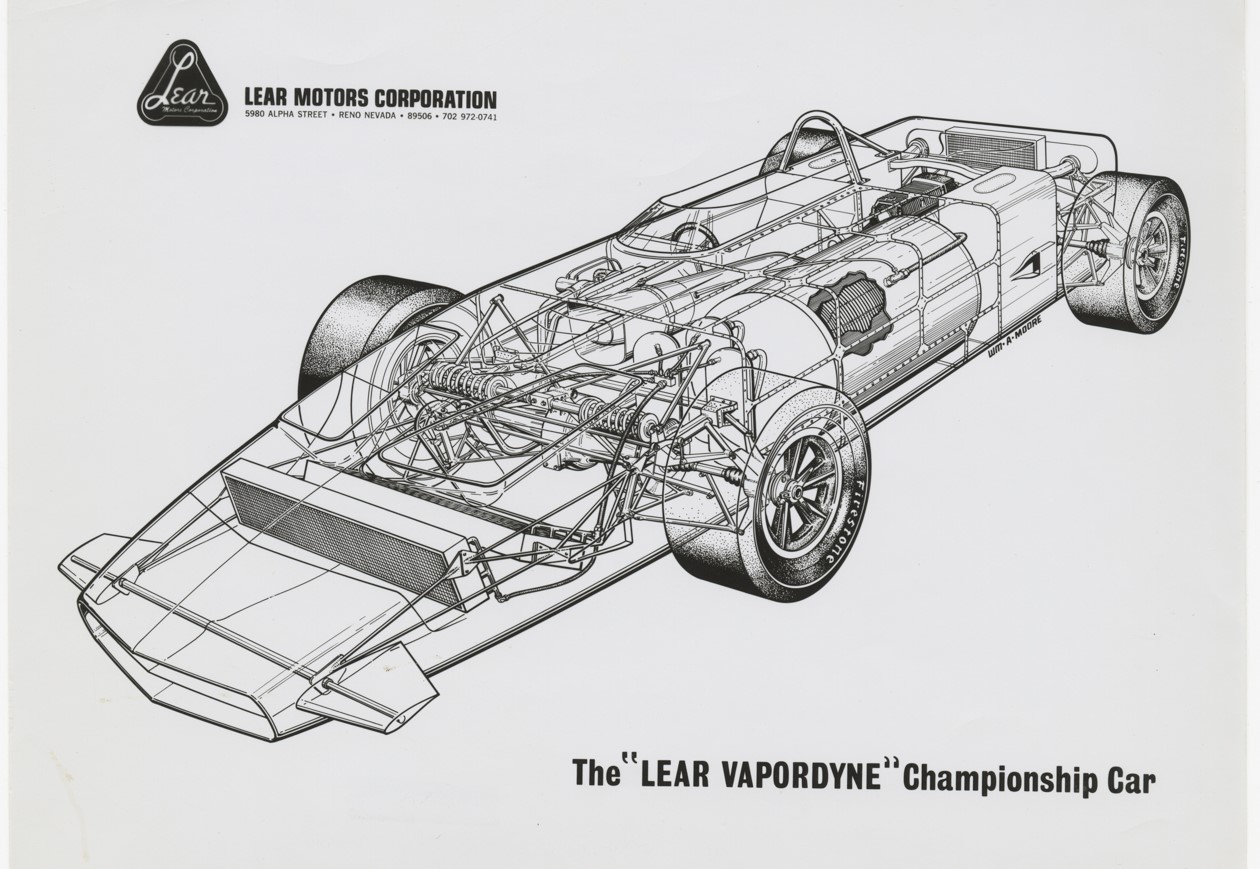 Tecnical drawing of the Lear Vapordyne
Tecnical drawing of the Lear Vapordyne
Bill Lear, famed inventor, entrepreneur and eccentric[1] best known for the Lear Jet, sought to revolutionise racing by introducing steam power to the Indianapolis 500. The concept was based on a compact, delta-configuration steam engine featuring six cylinders, 12 pistons, and three crankshafts arranged in a triangular layout. This design was unique in automotive engineering and emphasised torque over high-revving power. Lear envisioned the engine producing 1,000 hp or at least matching the 500-hp gasoline engines used by contemporary IndyCars. The car would have a six-foot-long boiler but despite its innovative design, the Vapordyne's engine would have struggled to produce 100 hp, far short of its ambitious target. To reach the desired power output, the boiler would have needed to be significantly larger—likely larger than the car itself.
Lear partnered with Ken Wallis, who had a hand in the STP Turbine Car and the Shelby Turbine Car, to develop the Vapordyne chassis. Wallis convinced Lear to enter the Vapordyne in the 1969 Indy 500, giving them just 13 months to start and complete the project. The rolling chassis resembled the turbine cars of the era, with the boiler occupying the space next to the driver and the engine mounted behind. By early 1969, with the Indianapolis 500 approaching, neither the engine nor the boiler had been built, leaving only a rolling chassis as the tangible result of the project. Lear eventually dismissed Wallis after spending an estimated $4 million on the chassis alone and the project was abandoned. Lear had poured $350,000 per week into the project, with unconfirmed estimates placing total development costs at around $13 million—a staggering sum for an experimental car that never raced or tested on a track.
The Vapordyne still exists today and has been restored as a rolling chassis but there is no trace of Lear’s revolutionary steam engine. Probably only a mock-up ever existed. The Vapordyne wasn’t Lear’s only foray into steam power. He also developed a steam-powered bus in the 1970s, tested in California. While functional, it was deemed too inefficient, especially in the wake of the 1973 oil crisis.
Although Bill Lear was one of America’s most prolific inventors, earning over 120 patents, the Vapordyne was an over-ambitious project that ultimately became an expensive failure.
Note [1]: He named one of his daughters Shanda (as in chandelier).


